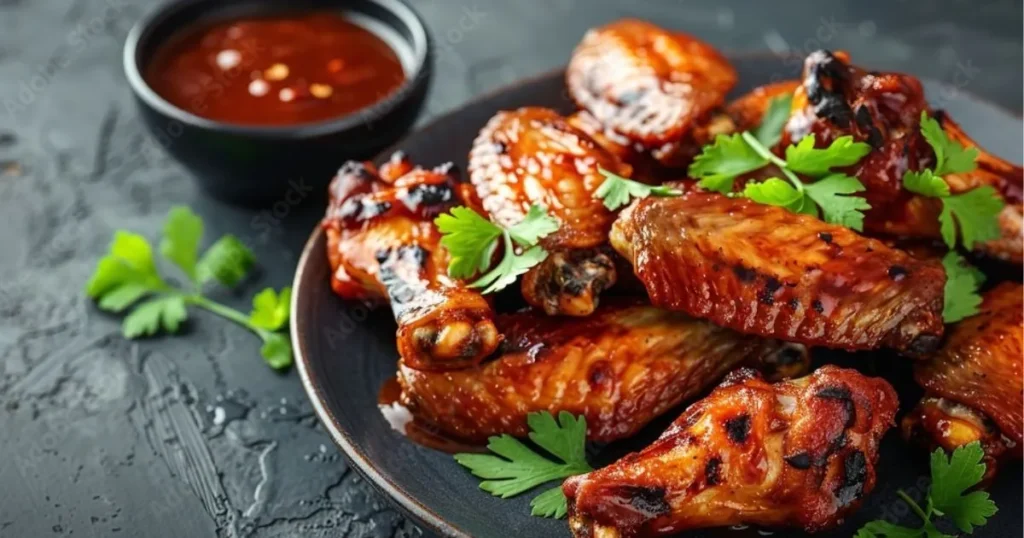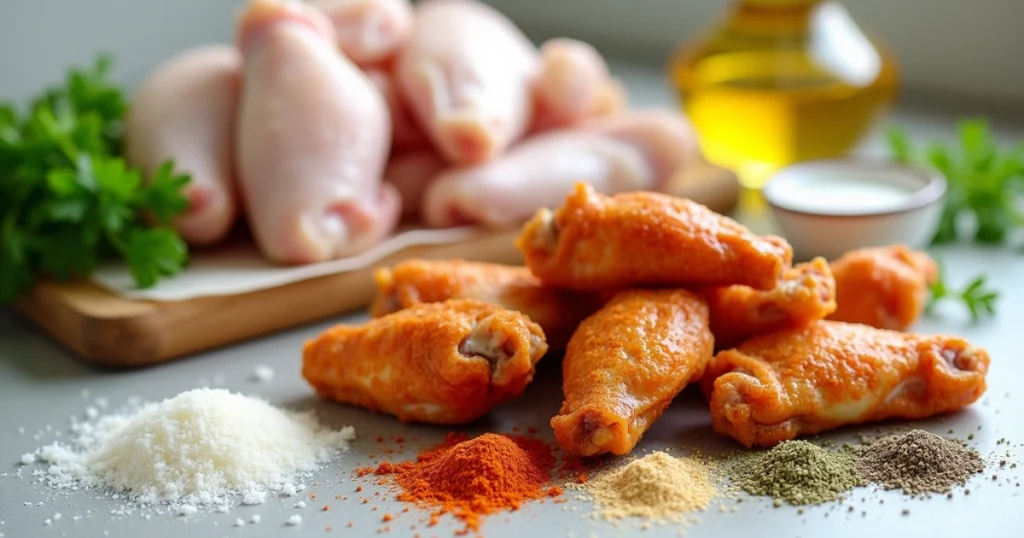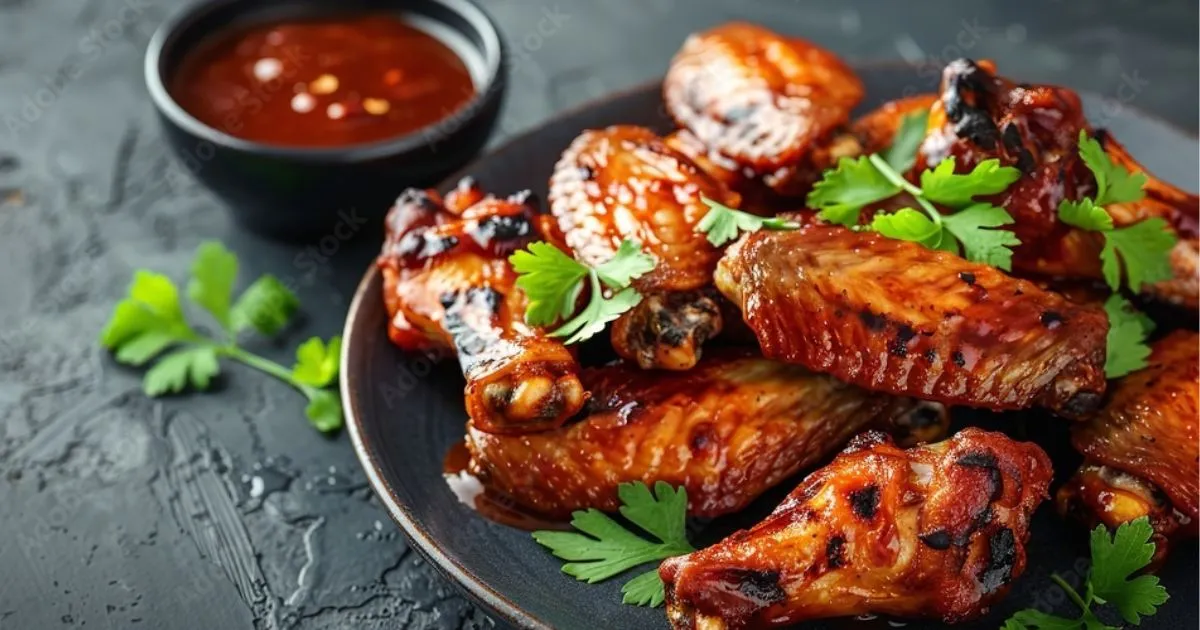
Table of Contents
Chicken Wings: A Flavorful and Versatile Snack
Definition, Origin, and Taste
Chicken wings are one of the most popular and beloved snack foods worldwide. They are typically deep-fried or baked, then coated with a variety of sauces or seasonings. The most common preparation includes the traditional buffalo wing style, but variations abound, with flavors ranging from tangy and spicy to sweet and savory. Chicken wings are known for their crispy skin and tender meat, providing a satisfying contrast in texture with each bite. The taste varies depending on the sauce or seasoning, but they’re typically flavorful, savory, and often spicy.
The origin of the chicken wing as we know it today dates back to 1964, when Teressa Bellissimo of Anchor Bar in Buffalo, New York, is credited with inventing the Buffalo wing. This innovative creation quickly spread in popularity, especially in the U.S., and has become a staple at parties, barbecues, and sports events.
Why This Article?
This article is aimed at helping both novice and experienced cooks discover new and exciting ways to prepare chicken wings. Whether you’re looking to master the classic buffalo wing or explore international flavors, we want to provide you with detailed, easy-to-follow instructions and ideas for creating the perfect wing every time. You’ll learn about the essential ingredients, techniques, and tips to elevate your chicken wing game—perfect for casual weeknight dinners, parties, or even game-day celebrations.
1. List of Ingredients

Ingredients:
- Chicken Wings: 10-12 wings (or as needed based on servings).
- Olive Oil: 2 tbsp (for coating the wings).
- Salt: 1 tsp (for seasoning).
- Black Pepper: 1/2 tsp (for seasoning).
- Garlic Powder: 1 tsp (for flavor).
- Paprika: 1 tsp (for a mild smoky taste).
- Baking Powder: 1 tbsp (helps to crisp the wings).
- Buffalo Sauce: 1/2 cup (or any preferred sauce, like BBQ, honey mustard, or teriyaki).
- Cayenne Pepper: 1/2 tsp (optional, for added heat).
Substitutes:
- Chicken Wings: If chicken wings aren’t available, you can substitute with chicken drumsticks or boneless chicken thighs.
- Olive Oil: Vegetable oil or canola oil can be used as alternatives.
- Buffalo Sauce: If you prefer a different flavor, try barbecue sauce, ranch dressing, teriyaki sauce, or a sweet chili glaze.
2. Servings
This recipe will serve 2-3 people as a snack or appetizer. If you need to serve more guests, you can easily double or triple the quantities.
3. Preparation Time
- Active Time: 10-15 minutes (for preparing and seasoning the wings).
- Inactive Time: 10-15 minutes (optional resting time before cooking for better flavor absorption).
- Total Time: 25-30 minutes (if baking, this includes prep and cooking time).
4. Cooking Time
- Cooking Time: 25-30 minutes (if baking) or 10-12 minutes (if deep-frying).
- Cooking Temperature: 400°F (200°C) for baking. If deep-frying, heat the oil to 375°F (190°C).
- Cooking Method: Baking or deep-frying are the two most common methods for cooking chicken wings. Baking allows for a healthier alternative, while deep-frying provides extra crispiness.
5. Step-by-Step Instructions
- Prepare the Wings: Rinse the chicken wings and pat them dry with paper towels. This helps achieve a crispy texture when baking or frying.
- Season the Wings: In a large bowl, combine olive oil, salt, pepper, garlic powder, paprika, and baking powder. Toss the wings in this mixture to coat them evenly.
- Cooking the Wings:
- Baking: Preheat your oven to 400°F (200°C). Place the wings on a baking sheet lined with parchment paper or a wire rack for better airflow. Bake for 25-30 minutes, flipping halfway through, until they are golden brown and crispy.
- Deep-Frying: Heat oil in a deep fryer or large pot to 375°F (190°C). Fry the wings in batches for 8-12 minutes, until they are golden brown and crispy. Remove them from the oil and drain on paper towels.
- Toss in Sauce: After cooking, toss the wings in your desired sauce (Buffalo, BBQ, or any other flavor you prefer). Ensure the wings are evenly coated.
- Serve and Enjoy: Serve immediately with dipping sauces like ranch, blue cheese, or additional hot sauce on the side.
6. Difficulty Level
Easy to Medium: Making chicken wings is straightforward, but the difficulty increases slightly depending on whether you’re deep-frying or baking. For beginners, baking is a simpler method, while deep-frying adds a bit more technique to ensure crispy and evenly cooked wings.
7. Presentation and Plating Suggestions
- Serve on a platter: Arrange the chicken wings in a circular pattern or stack them in a pile for an inviting presentation.
- Garnish with fresh herbs: A sprinkle of chopped parsley or cilantro adds a touch of color and freshness.
- Serve with sides: Pair your wings with crispy fries, celery sticks, or a side salad for a complete meal.
8. Taste Profile
The flavor of chicken wings depends largely on the sauce or seasoning used. Classic Buffalo wings offer a spicy, tangy, and slightly buttery taste, while BBQ wings deliver a sweet and smoky profile. The crispy exterior adds a delightful crunch to the tender meat inside, making each bite a satisfying contrast of textures. With a variety of sauces and seasonings available, the taste can range from tangy and sweet to fiery hot and savory.
9. Allergen Information or Dietary Restrictions
- Gluten-Free: Chicken wings are naturally gluten-free. Just be cautious about sauces—some store-bought sauces may contain gluten, so make sure to choose gluten-free sauces if needed.
- Dairy-Free: Most chicken wings recipes are dairy-free, but if you’re using butter-based sauces (like buffalo sauce), consider using dairy-free butter or oil as a substitute.
- Spicy: Many wing sauces, especially buffalo sauce, can be spicy. If you prefer a milder flavor, use a less spicy sauce or reduce the amount of cayenne pepper in the recipe.
10. Nutritional Information
Here’s an approximate breakdown per serving (5-6 wings, uncoated):
- Calories: 250-300 kcal (depending on cooking method and sauce).
- Fat: 18-20g (mostly from the chicken skin and oil).
- Carbohydrates: 0-5g (depending on sauce and coating).
- Protein: 20-25g.
- Cholesterol: 70-80mg.
- Sodium: 500-600mg (can vary depending on the sauce used).
11. Storage and Leftover Tips
- Storing Leftovers: Store leftover chicken wings in an airtight container in the fridge for up to 3-4 days.
- Reheating: Reheat wings in an oven at 350°F (175°C) for 10-15 minutes or in an air fryer for 5-7 minutes to keep them crispy.
- Freezing: You can freeze cooked wings for up to 3 months. To reheat from frozen, bake them in the oven at 375°F (190°C) for 20-25 minutes.
12. Troubleshooting
- Wings Not Crispy: If your wings are not crispy, make sure they are thoroughly dry before cooking. If baking, consider using a wire rack to ensure air circulates around the wings for crispiness.
- Under or Overcooked Wings: If baking, check the internal temperature of the wings. The optimal internal temperature for fully cooked chicken is 165°F (74°C). Use a thermometer to ensure they’re perfectly cooked.
13. Cultural or Historical Context
Chicken wings, particularly in the form of Buffalo wings, have become a central part of American food culture, especially at sports bars, parties, and gatherings. The creation of Buffalo wings in the 1960s is credited to Teressa Bellissimo of the Anchor Bar in Buffalo, New York. Her invention, consisting of deep-fried chicken wings coated in a tangy hot sauce, quickly gained popularity and has since spread worldwide. The “Buffalo wing” has become synonymous with American sports culture, especially during major events like the Super Bowl, where millions of wings are consumed every year.
Other recipes related to chicken wings : Grilled Chicken Wings , Air Fryer Chicken Wings

